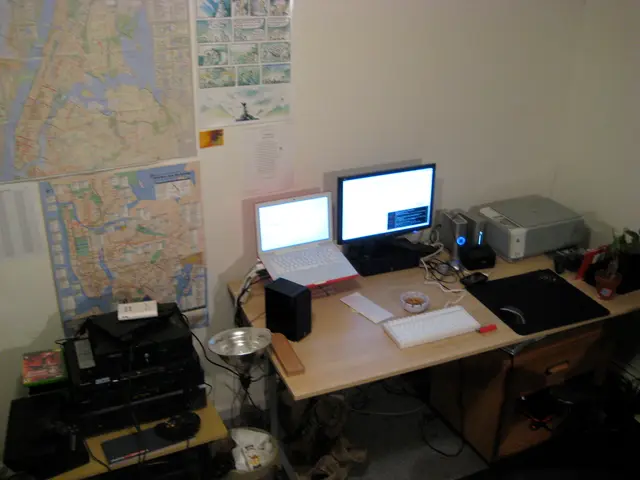local AI performance not limited to high-end PCs; seven-year-old mid-range laptop proves this assertion
In the realm of artificial intelligence, the misconception persists that high-end hardware is a prerequisite for running AI models. However, a recent test conducted on an older Linux laptop challenges this notion.
The author, in a bid to debunk this myth, put three 1 billion parameter AI models - Gemma3:1b, Llama3.2:1b, and DeepSeek-r1:1.5b - to the test on their seven-year-old Huawei MateBook D. Equipped with an AMD Ryzen 5 2500U, 8GB of RAM, and no dedicated graphics, the laptop demonstrated that running AI locally on a PC does not necessarily require high-end hardware.
To the author's surprise, all three AI models completed tasks significantly faster than they could type. When connected to external power, the models doubled their tokens per second and took about half as long to complete tasks.
Gemma 3, with its detailed output, questions, and script tailoring, churned out responses at an average of 10 tokens per second. Llama 3.2, designed as a compact, efficient model, followed closely behind with a similar output quality at the same speed. Deepseek r1, while slightly slower at 8 tokens per second, did not ask questions.
Llama3.2:1B, with its minimal resource requirements, is particularly suitable for older hardware. It can run on CPU-only systems, albeit with some slowdown, and is ideal for lightweight tasks like chatbots, CLI assistants, and small automations. DeepSeek-R1:1.5B, while ideally benefiting from GPUs like NVIDIA T4 (16GB VRAM) for speed, can still run on the laptop's CPU but slower.
Gemma3:1B, although less commonly detailed for minimal setups, is typically feasible on 8GB RAM CPU-only environments with optimized runtimes like llama.cpp. However, more RAM and a decent CPU or quantization are advised for reasonable speeds.
The author recommends using CPU-optimized runtimes like with quantization (e.g., 4-bit or 8-bit) to reduce RAM and CPU load. Be prepared for longer inference latency, as the absence of a dedicated GPU limits throughput.
While smaller 1B-scale models like Llama3.2:1B and DeepSeek-R1:1.5B are viable on the specified specs, larger models (12B+) or heavier models (e.g., full Gemma 12B or DeepSeek 14B) are not usable without significantly more RAM and preferably GPU acceleration.
Ollama, a platform-agnostic AI tool, can be used on Linux, Mac, and Windows systems, further expanding the accessibility of AI. The tests were performed purely using the CPU and RAM, with no dedicated graphics, and all on battery power with a balanced power plan.
In conclusion, small 1B parameter models like Llama3.2:1B and DeepSeek-R1:1.5B are viable on older Linux laptops with 8GB RAM and Ryzen 5 2500U CPU, but expect restricted performance and higher latency due to the absence of a GPU. Optimized CPU runtimes and quantized models improve usability. Larger models would not be practical on this hardware.
- The author tested three AI models on an older Linux laptop, which, despite having an AMD Ryzen 5 2500U, 8GB of RAM, and no dedicated graphics, managed to run AI locally on a PC without expensive hardware.
- On the test, Llama3.2:1B, a compact and efficient model with minimal resource requirements, showed suitable performance on the older laptop's CPU-only system, albeit with some slowdown, and was ideal for lightweight tasks.
- Gemma3:1B, while feasible on 8GB RAM CPU-only environments with optimized runtimes like llama.cpp, showed good performance but would benefit from more RAM and stronger CPUs for reasonable speeds.
- To improve usability on older hardware, the author recommends using CPU-optimized runtimes with quantization to reduce RAM and CPU load, understanding that this approach may lead to longer inference latency due to the absence of a dedicated GPU.
- The author tested Ollama, a platform-agnostic AI tool, on the same Linux laptop, demonstrating that it can be used on older systems without dedicated graphics, opening up the realm of artificial intelligence to a broader audience.




